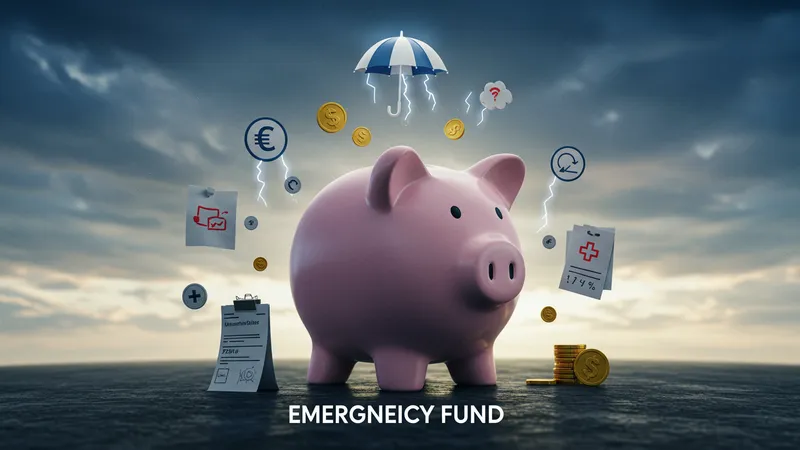

You won't believe how one simple choice could slash years off your student loan debt. A growing number of graduates are discovering the secret—but why hasn't everyone caught on?
With tuition fees climbing like never before, your choice of student loan plan is more critical than you might think. Ignoring the fine print could cost you thousands over a lifetime.

What if we told you that the interest rates you’ve been fed might not be the best rates available? Many assume federal loans are their safest bet, but the landscape is shifting. Private lenders now offer competitive perks that can sometimes outmatch federal benefits. But that’s not even the wildest part…
Most students don’t realize that their repayment plan selection could vastly affect their financial freedom later. Loan consolidation, income-driven plans, or refinancing could save you heaps, yet remain underutilized due to lack of awareness. What really happens when you contrast different loan offerings? What happens next shocked even the experts…
When diving into the world of student loans, the often unseen costs can be shocking. Origination fees, which are essentially charges for processing the loan, can add up quickly. Some lenders quietly tack on these fees, turning what seemed like a minimal cost into hundreds, if not thousands, over the life of the loan. But there's one more twist—some nominees build these fees into the interest rate, disguising higher costs as cheap loans.

Beyond those initial charges, late payment fees can entrap you in a vicious cycle. Miss one payment, and you could be facing hefty penalties that spiral out of control. Not to mention the impact of these late fees on your credit score, which can make future borrowing more expensive. What you read next might change how you see this forever.
Even the smallest changes in your loan terms can have a significant impact. A few percentage points in interest differences could mean paying back thousands more over the span of decades. Caught by surprise graduates often express their disbelief when they see how their earnings are siphoned due to inadequate loan planning. But there’s yet another angle to consider...
Did you know that loan servicers sometimes change, which can confuse your repayment strategies? New terms, inconsistent communication, and even errors in reporting are not unheard of. The ramifications of not understanding who handles your loan can drastically alter repayment outcomes. Stay tuned as we delve deeper into how you can stay on top of these changes and save yourself from unnecessary pitfalls.
Your choice of repayment plan can redefine your financial trajectory. An income-driven repayment (IDR) plan, for instance, pegs your monthly payments to your income, offering relief to those fresh out of college. This flexibility is lifesaving, especially when starting out on a new career path with unpredictable earnings. Yet many overlook it in favor of traditional fixed plans, potentially missing out on valuable savings. Here’s where it gets really interesting…

Public Service Loan Forgiveness (PSLF) offers another breath of fresh air for graduates who work in specific sectors. Imagine fulfilling a service to society while gradually chipping away at your loan, with the promise of forgiveness after ten years of qualifying payments. However, the complexity of the eligibility criteria puts many off. But, understanding these nuances can mean the difference between drowning in debt or resetting your financial future.
On the flip side, some repayment plans include automatic graduation into new terms. If you sustain steady payments over time, you could automatically transition into a lower interest rate or reduced monthly payment scheme. This seamless transformation can free up funds for investments, savings, or other financial ventures. Yet, these benefits are often under-publicized. Still, there’s something else you shouldn’t overlook…
The merits of loan consolidation are widely advocated but with little understanding of the fine details. By bundling different loans into a single entity, managing payments becomes a streamlined process with potentially lower interest rates. But missteps in consolidating can mean missing out on federal forgiveness programs. Curious about how to make the most of these strategies? Keep reading for insider tricks and tips that'll empower your choices.
Refinancing student loans could be the ticket to escape the weight of overwhelming debt. By securing a lower interest rate with another lender, the amount you pay back over time decreases significantly. For recent graduates, this means funneling more of their hard-earned cash back into life instead of interest payments. But the question remains—how do you decide when it’s the right time to refinance?

Lowering monthly payments is appealing, but refinancing can sometimes come with hidden catches. Federal loans typically offer benefits like deferment or forbearance, which you could forfeit. Additionally, you could lose out on loan forgiveness options in certain cases. Yet, many are tempted by the immediate savings on their monthly budget. The challenge is distinguishing the real opportunity from short-term convenience.
Timing is crucial when refinancing. With interest rates fluctuating, getting caught in a refinance trap too soon could mean favorable rates pass by unnoticed. Lenders have been offering enticing rates amidst economic shifts, but there’s an art to timing your application right. Ever wondered what the expert refinancing strategy might be? We’re about to uncover some tips that experts rely on.
Yet another aspect of refinancing that’s often shrouded in misunderstanding is credit requirements. Your credit score plays a pivotal role in accessing lower rates, and improving it can open doors to previously inaccessible opportunities. But why is the interplay between credit and refinancing still so misunderstood? Stay tuned for a breakdown that demystifies these essential elements.
The debate over federal versus private student loans is rife with myths and misinformation. While federal loans come with set interest rates and borrower protections, private loans can mirror competitive rates and repayment flexibility. The disparity often boils down to public perception versus reality—where do the truths really lie?

Federal loans are typically easier to qualify for and offer fixed rates, making them a go-to for many. But what many don’t realize is that private loans have started to match, and sometimes exceed, these offerings. With features like customizable repayment terms, the private sector’s rising competition against federal money is real.
The issue with federal loans often boils down to bureaucracy. Payment issues or disputes can become gallingly complex due to the size of federal systems involved. In contrast, private institutions might offer quicker customer service and problem resolution. Yet, given all these insights, why does federal money remain a staple choice for so many students?
Surprisingly, private loans can sometimes be more negotiable regarding repayment options. Lesser-known regional providers may even tailor their offerings to your income and career trajectory far better than national ones. But how do you navigate through these myriad choices? We’ll offer guidance that can simplify the decision process in unexpected ways.
Deferred payments often seem like a tempting option for fresh graduates unsure of their financial footing. They offer a grace period where no immediate payments are required, an enticing cushion during those early career jitters. But is it really as beneficial as it seems?

This breathing space can help new grads secure their footing in the workforce before repayments kick in. However, interest keeps accruing during this deferment, quietly inflating the total debt. When the first payment finally arrives, graduates are often shocked at the higher balance awaiting them. So, what’s the real impact of taking a pause?
Alternatives to deferring payment might involve income-driven plans or partial payments which keep the interest from ballooning. Understanding these tactics can mitigate the shock to your financial system later. We’ll explore some strategies and stories from graduates who made deferment work smartly for them.
But wait, there’s a flipside that’s rarely discussed—deferred payments could jeopardize your credit development early in your career. Without regular payments, those positive credit-reporting opportunities are missed, potentially limiting your creditworthiness when you need it most. Keep reading to find out how to strike the right balance.
Student loan forgiveness is touted as the magic wand for debt relief, but how accessible is it really? Programs like Public Service Loan Forgiveness (PSLF) promise to wipe out your student debt after ten years of service in qualifying employment. But the reality is fraught with challenges, rigorous eligibility demands, and a staggering rejection rate. Is it still worth the pursuit?

The hurdles to forgiveness are many—detailed paperwork, strict timelines, and specific job types. Failure at any step could disqualify applicants, often after years of qualifying payments. The complexity deters many who would otherwise qualify. Yet, persistent graduates who navigate this landscape successfully share a crucial advantage.
On closer observation, more are questioning whether loan forgiveness might serve as more of a deterrent—for those who count on it without understanding the requisites—rather than a relief. The need for a strategic approach can't be overstated. Curious on how you can reliably benefit from such programs? We’ll cover how you can fortify your attempt for success.
But here’s what flips the script entirely—some lenders are launching institution-specific forgiveness programs. These mimic federal offerings but with less red tape and broader criteria. Find out what innovative opportunities these programs hold and whether they might be your key to genuine financial liberation.
Many students and their families turn to co-signers to secure lower interest rates on private loans. By adding someone with a strong credit history, the borrower’s interest obligations could be lightened. But, the responsibility it imposes might surprise you.

When default happens, co-signers are equally liable, which could strain personal relationships. Understandably, many are wary, unaware of how this common tool can influence significant financial ties and credit scores on both ends. But co-signing, approached carefully, could be more than just risky business.
Some lenders now offer co-signer release options once you’ve demonstrated a history of reliable payments. Educating yourself in choices like these can free family members while retaining the benefit of that initial interest rate reduction. Uncover how to leverage these opportunities without entangling your relationships.
Another twist—financial consultants often recommend that co-signers stay actively engaged in the repayment process to avoid misunderstandings. But this often-overlooked advice is critical in sustainable financial planning, helping both parties emerge unscathed. Want to know their top strategies? Keep reading for the insiders’ perspective on the coordination required.
If there’s one unassuming line in your contract that carries the most punch, it’s the interest rate. Many students find themselves blindsided by how a “discounted” rate can balloon with time, swallowing up monthly discretionary spending. How do you sidestep these financial snares?

Teaser rates, often highlighted in brightly embellished fonts, capture attention. Yet, they can double or triple after an initial honeymoon period. Borrowers who fail to read the terms carefully find themselves stuck, paying far more than anticipated. We’ve uncovered what lenders don’t advertise.
Consider alternative options like fixed-rate loans for long-term stability, ensuring rate hikes won’t surprise you. This upfront decision can save a fortune over the loan’s lifespan. Still, it’s not just about choosing a fixed rate—there are technique insights that could tip the scales further in your favor.
The catch? Lock-in rates are sometimes concealed beneath complex jargon or require stringent qualifications. Only a handful of borrowers successfully navigate these waters to lock in the best terms. Stay tuned for expertise on how to hone your selection skills, enhancing your financial acumen.
Making extra payments toward your student loans seems like an obvious money-saver, but did you know it can be a strategic game-changer too? By directly hitting the principal, borrowers shorten their debt timeline, reducing overall interest paid. But there's another benefit few consider…

Prepayment can also build credibility with your lenders. Demonstrating financial responsibility strengthens your credit profile, opening doors to better loan rates in the future. But without clear communication, these prepayments might solely reduce future monthly obligations, keeping the principal untouched.
A sharp approach—explicitly directing payments toward the principal—maximizes the impact of extra funds. Imagine the peace of mind when you know each extra dollar is actively working against your debt. Yet, this method isn't widely adopted, probably due to overlooked communications with loan servicers.
Moreover,cash windfalls, like bonuses or gifts, can serve as accelerators to loan payoff strategies. Use these to clear debt faster, improving your financial resilience. How might strategic prepayment lessen the weight of silly cautionary tales? Read on to be amazed at their transformative power.
In the tech-savvy world, digital refinancing tools are proving instrumental in unraveling the complexities of student loans. They provide comparisons, projections, and insights that simplify the refinancing journey, making decisions less daunting. But who are the frontrunners in this innovation?

Tools like Credible and LendKey are leading the charge with user-friendly interfaces that propose multiple lender offers in minutes. This transparency empowers borrowers, transforming refinancing from a tedious task to an informed choice. Yet, these advancements come with their quirks.
While appealing, these calculators sometimes don’t capture all variable nuances, potentially overlooking personal circumstances. However, they serve as an excellent preliminary analysis, guiding borrowers toward better-suited options with ease. Optimizing one's loan strategy through these tools can shield from the financial guesswork typical in manual comparisons.
Even more enlightening, advancements leveraging AI and machine learning predict financial trajectories more accurately, refining strategies proactively. The benefits are profound, but are you utilizing them to their full potential? Discover the secrets behind harnessing this tech and revolutionizing your loan repayment journey.
Student loan relief programs make headlines, offering hope to those drowning in debt. But navigating the maze of eligibility requirements and rigid terms can be overwhelming. How do you separate real opportunities from misleading promises?

Programs may include benefits such as reduced interest, temporary forbearance, or streamlined payment plans, targeting specific segments like healthcare professionals or military veterans. Yet these come wrapped in administrative red tape that's all too easy to mishandle. It’s essential to decode the application process carefully to truly benefit.
Even public offerings can falter under their weighty guidelines and lengthy timelines, sometimes disillusioning hopeful participants. However, staying updated with policy changes can alter your chances significantly. Knowledge is power—and in this case, potentially a lifesaver.
Nevertheless, private relief initiatives offer an alternative route with less bureaucracy but often tighter eligibility. They help borrowers find footing until more stable solutions arise. What pivotal approaches can optimize your chance of success in these programs? Prepare for insights that could unlock new financial paths.
Instead of focusing solely on loans, integrating grants and scholarships into your financial strategy could change the playing field entirely. These resources offer "free money," reducing reliance on debt. Yet, millions of dollars go unclaimed yearly. So, why are these golden opportunities missed?

Many assume grants and scholarships are exclusively for the academically gifted, but they cover a broader spectrum, including volunteer work, hobbies, or specific demographics. Keeping a proactive eye on these chances can be as beneficial as keeping track of loan offers.
Access involves diligence—timely applications, persuasive essays, and repeated attempts. Amid a sea of applicants, dedicated efforts often result in securing funds that directly replace loan reliance. Yet, few perceive the real magnitude of these wins.
What’s even more surprising is the availability of untapped regional and lesser-known scholarships that suffer from low application volumes. This untapped goldmine of educational funding can pave your debt-free path. Want to unlock the secret to finding these opportunities? Let’s dive into some top tactics.
So, what if managing student debt wasn't solely about repayment plans and interest rates, but about mindset? A psychological approach to debt management can empower you to act decisively, alleviating financial stress and enhancing life satisfaction. But how do mindsets influence money?

Cultivating a positive money mindset alters your perspective on financial responsibility. Viewing loans as devices that enable your educational journey rather than burdens can redefine your approach. This shift inspires motivated debt reduction strategies, reducing perceived obstacles.
Strategies such as envisioning debt-free living helps maintain a focus on long-term gains instead of short-term discomfort. These psychological anchors fortify resilience, directly impacting repayment consistency and strength. But how do financial psychology practices like these truly manifest?
Financial coaching, personal finance courses, and support groups refine this shift, propelling personal development in unprecedented ways. Your money management acumen grows exponentially, suggesting there’s more to gain than mere debt relief. We’ll cover how to embrace these insights as powerful allies in navigating your student loan journey.
While it might seem counterintuitive when tackling debt, maintaining an emergency fund of savings is a reclamation of financial leverage in times of need. Emergencies often derail repayment schedules, straining finances further. But a buffer fund is a saving grace.

This preparation not only shields you from unforeseen expenses but ensures continuity in the face of unexpected events like job loss or medical emergencies. Peace of mind isn’t just a byproduct; it is a strategic tool that fosters recovery without derailing goal achievements.
Furthermore, financial advisors emphasize the power of coupling emergency funds with term life insurance, which fortify shared responsibilities. Not only does it aid your student loans repayment journey, but it guards against systemic family financial downfall, offering a dual-layered approach to stability.
The potency of this financial safeguard shines in its simplicity, yet the challenge remains making room for savings while combating debt. How can you fulfill this dual burden effectively? We delve into practical solutions that align with challenging financial realities.
The path to loan freedom is often as winding as the terms in your student loan agreement. From navigating hidden costs to leveraging refinancing tools, there is no singular strategy guaranteeing success. But understanding the terrain makes the journey less daunting.

The intricate dance between repayment plans, forgiveness programs, and psychological resilience scripts a narrative rich with potential. Recognizing institutional shifts and personal strengths within this framework can transform daunting obstacles into manageable milestones.
But the ultimate revelation lies in fact-based strategies rather than impulsive decisions. By adopting a financially literate mindset and a proactive stance, the elusive goal of loan freedom morphs into a tangible reality.
Your journey toward student loan clarity isn’t just about debt elimination—it’s a personal empowerment odyssey. Embrace these insights, craft strategic choices, and reshape your financial narrative with confidence, paving the way for an empowered future.
What you’ve uncovered through this article is just a glimpse into the myriad possibilities in tackling student debt. The takeaway? Every borrower’s journey is unique and filled with opportunities to explore, innovate, and conquer. Share this article with fellow students, bookmark it as a handy guide, and take savvy actions towards your brighter, debt-managed future!